Great Reset
From Border Security to Big Brother: Social Media Surveillance

 By Christina Maas
By Christina Maas
Was the entire immigration reform rhetoric just a prelude to broadening government spying?
Let’s take a closer look: immigration became a hot-button campaign issue, with plenty of talk about “welcoming” migrants, combined with a healthy dose of hand-wringing about border security. Now, however, critics are uncovering what looks like the real priority—an enhanced federal surveillance operation aimed at monitoring not just new arrivals, but American citizens too. In the name of keeping tabs on who’s coming and going, the administration sank more than $100 million into a social media surveillance system designed to keep an eye on everyone.
The Department of Homeland Security (DHS) first flirted with these powers under Trump’s presidency, when ICE officials began monitoring social media under the guise of protecting the homeland. The Biden-Harris administration, having previously expressed horror at Trump-era excesses, took a softer tack, but actually increased mass surveillance. They rebranded the initiative as the Visa Lifecycle Vetting Initiative (VLVI), a name that practically exudes bureaucratic charm while implying a methodical, visa-centric approach. But if it was just an immigration program, why was it scanning communications between Americans and their international friends, family, or business contacts?
According to a lawsuit from the Electronic Frontier Foundation (EFF), the program evolved into something much larger than a mere visa vetting system. The scheme entailed broad surveillance of communications and social media activity, conveniently sidestepping pesky things like “probable cause” or the First Amendment. “Government officials peering through their correspondence with colleagues visiting from overseas and scrutinizing the opinions expressed in their communications and their work,” read a lawsuit that laid bare the VLVI’s invasive nature. What started as a system to vet foreigners’ eligibility to enter the U.S. quietly metastasized into an excuse to monitor anyone who dared connect across borders.
We obtained a copy of the lawsuit for you here.
We obtained a copy of documents batch one for you here.
We obtained a copy of documents batch two for you here.
Of course, in true Washington style, this story wouldn’t be complete without a twist of political theater. The administration’s rhetoric has leaned heavily on a supposed dedication to protecting civil rights and personal freedoms—while simultaneously doubling down on programs that do the opposite.
A Little Privacy, Please? DHS Puts American Social Media on the Watchlist
Ah, the Fourth Amendment — one of those quaint, old-timey Constitutional protections that grant Americans the basic human right not to be poked, prodded, or probed by their own government without a solid reason. It’s a promise that Washington will think twice before sifting through your life without a warrant. Yet somehow, in the age of social media, this Fourth Amendment right seems to be slipping into the hazy realm of memory, particularly when it comes to Uncle Sam’s latest pastime: keeping tabs on everyone’s online chatter under the banner of immigration vetting.
Welcome to the VLVI, a Homeland Security special that appears to have mistaken “security” for “surveillance.” This bureaucratic marvel was dreamed up as a means to monitor non-citizens and immigrants, ostensibly for national security. But according to recent lawsuits, it’s not just foreigners on the watchlist—average Americans now get to share the surveillance limelight too, all thanks to the Department of Homeland Security’s fondness for “indiscriminate monitoring” of citizen communications. And why? Because in the brave new world of VLVI, any American chatting online with an overseas connection might just be suspicious enough to keep an eye on.
A Sweeping “Security” Measure or Just Mass Surveillance?
Here’s where the Constitution starts to feel like an afterthought. Traditionally, the government can’t simply jump into your emails, texts, or online rants without a warrant backed by probable cause. The Fourth Amendment makes that pretty clear. But in the VLVI’s playbook, this notion of “probable cause” becomes something of a suggestion, more of a “nice to have” than a constitutional mandate. Instead, they’ve embraced an approach that’s less “laser-focused security effort” and more “catch-all dragnet,” casting wide nets over American citizens who happen to connect with anyone abroad—no illegal activity necessary.
Imagine you’re a US citizen messaging your friend in France about a summer trip, or maybe you’re just exchanging memes with a cousin in Pakistan. Under this initiative, that simple exchange could land you in a Homeland Security database, your innocent messages cataloged alongside the truly suspicious characters of the internet. And this is happening without any individual warrants, without specific suspicion, and in some cases, without probable cause. One might ask, exactly how does that square with the Constitution’s protections?
Privacy Protections? That’s for Other People
This is all a question of government trust and hypocrisy. The program began under a previous administration but was quickly shuttled along by the current one, despite its public stance championing privacy rights. There’s something ironic about politicians who rally for civil liberties in campaign speeches, only to maintain and expand government surveillance in office. The backlash has been predictably loud, and for good reason. Here we have a policy that effectively treats every social media user as a latent threat and a government that somehow expects people to swallow this as reasonable.
Critics have slammed this “watch-all” approach, pointing out that it doesn’t take a legal scholar to see how this might just cross a constitutional line or two. It’s not just Americans with foreign friends who are worried—it’s anyone who believes the government shouldn’t rummage through citizens’ lives without cause. “This type of program, where citizens’ digital lives are surveilled under a sweeping policy without individual warrants or specific reasons, sounds like an unreasonable search,” privacy advocates say.
The Price of a Free Society: Now With Less Freedom
Of course, VLVI supporters wave away these concerns with a dismissive “it’s for security” mantra as if that excuse covers every constitutional breach. And true, there’s little doubt that some level of monitoring is necessary to keep the truly dangerous elements out of the country. But we’re talking about ordinary people here, law-abiding citizens getting swept up in a bureaucratic machine that fails to distinguish between a casual chat and a credible threat.
When the government can tap into anyone’s social media profile because of a flimsy association, what’s left of the citizen’s “reasonable expectation of privacy”? In theory, the Fourth Amendment protects it; in practice, programs like VLVI gnaw away at it, one seemingly “harmless” violation at a time. If we keep pretending this is just another harmless tool in the security toolkit, we might as well hang up any remaining illusions about the privacy rights we’re supposedly guaranteed.
Just Another Step Toward a Surveillance State?
For Americans, it’s a chilling reminder that a swipe on Instagram or a chat on Facebook can mean more than just casual social interaction. For the DHS, it seems the message is clear: treat everyone as a suspect first, and figure out the legalities later. What happens to the expectation of privacy for ordinary Americans? It’s probably time we all start looking over our digital shoulders, because in the world of VLVI, “reasonableness” is a government privilege, not a citizen’s right.
Censorship Industrial Complex
Global media alliance colluded with foreign nations to crush free speech in America: House report
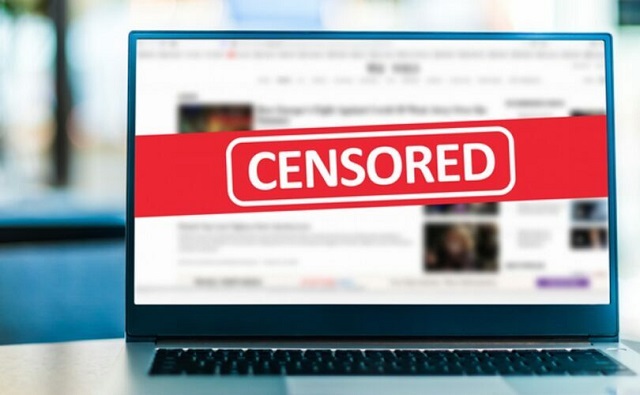
From LifeSiteNews
By Dan Frieth
The now-defunct ad coalition GARM shared insider data and urged boycotts of Twitter to punish non-compliance with its ‘harmful content’ standards, a US House Judiciary report shows.
A new report from the U.S. House Judiciary Committee has shed light on what it describes as an alarming collaboration between powerful corporations and foreign governments aimed at suppressing lawful American speech.
The investigation focuses on the Global Alliance for Responsible Media (GARM), an initiative founded in 2019 by the World Federation of Advertisers (WFA), which the committee accuses of acting as a censorship cartel.
According to the report, GARM, whose members control about 90 percent of global advertising spending, exploited its market dominance to pressure platforms like Twitter (now X) into compliance with its restrictive content policies.
A copy of the report can be found HERE.
The committee highlighted how GARM sought to “effectively reduce the availability and monetization” of content it deemed harmful, regardless of public demand for free expression.
Documents obtained by the committee reveal direct coordination between GARM and foreign regulators, including the European Commission and Australia’s eSafety commissioner.
In one exchange, a European bureaucrat encouraged advertisers to leverage their influence to “push Twitter to deliver on GARM asks.”

Similarly, Australia’s eSafety Commissioner Julie Inman Grant praised GARM’s “significant collective power in helping to hold the platforms to account” and sought updates to “take into account in our engagement and regulatory decisions.”

Robert Rakowitz, GARM’s co-founder and initiative lead, expressed a chilling goal in private correspondence, stating that silencing President Donald Trump was his “main thing” and likening the president’s speech to a “contagion” he aimed to contain “to protect infection overall.”

The report outlines how GARM distributed previously unavailable non-public information about Twitter’s adherence to its standards, fully aware this would prompt advertisers to boycott the platform if it failed to conform. According to the House report, Rakowitz admitted that this information sharing was designed to encourage members not to advertise on Twitter.
He went as far as to draft statements urging GARM members to halt advertising on the platform, telling colleagues he had gone “as close as possible” to saying Twitter “is unsafe, cease and desist.”
Despite the widespread impact of GARM’s actions, including what the committee describes as coerced “concessions” from platforms, internal polling circulated within GARM showed that “66 percent of American consumers valued free expression over protection from harmful content.”
Still, GARM pressed ahead with efforts to “eliminate all categories of harmful content in the fastest possible timing,” ignoring consumer preferences.
Even after GARM dissolved in 2024 amid legal challenges, similar efforts persisted.
A new coalition led by Dentsu and The 614 Group briefly attempted to revive GARM’s mission before disbanding under scrutiny. Gerry D’Angelo, a former GARM leader, reflected on the initiative’s overreach, stating, “Did we go too far in those first rounds of exclusionary restrictions? I would say yes.”
The Judiciary Committee warns that despite GARM’s downfall, the threat of collusion to stifle free expression remains.
It pledged to continue oversight to defend “the fundamental principles” of the Constitution and ensure that markets, not coordinated censorship efforts, shape the flow of information in the digital age.
Reprinted with permission from Reclaim The Net.
Business
World Economic Forum Aims to Repair Relations with Schwab
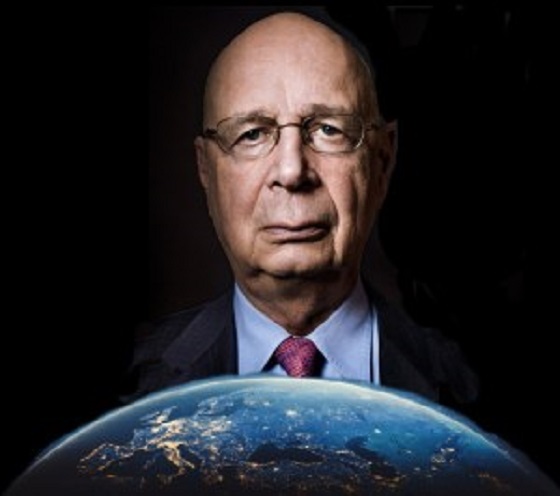
The whistleblower has always been anonymous, and it remains very suspicious that the very organization he created would turn on him after receiving an anonymous letter that they admitted may not have been credible.
World Economic Forum founder Klaus Schwab stepped down from his chairman position at the organization on April 20, 2025, amid accusations of fraud. Our computer had forecast that the WEF would enter a declining trend with the 2024 ECM turning point. This staged coup happened about 37 years after the first Davos meeting (8.6 x 4.3). From our model’s perspective, this was right on time. Now, Schwab and the WEF are working to repair ties.
An anonymous whistleblower claimed that Klaus Schwab and his wife collaborated with USAID to steal tens of millions in funding. The whistleblower has always been anonymous, and it remains very suspicious that the very organization he created would turn on him after receiving an anonymous letter that they admitted may not have been credible. Something like this would never be acceptable in any court of law, especially if it’s anonymous. It would be the worst or the worst hearsay, where you cannot even point to who made the allegation.
Back in April, the WEF said its board unanimously supported the decision to initiate an independent investigation “following a whistleblower letter containing allegations against former Chairman Klaus Schwab. This decision was made after consultation with external legal counsel.”
Now, the WEF is attempting to repair its relationship with its founder ahead of the next Davos meeting. Bloomberg reported that the WEF would like to “normalize their relationship [with Klaus Schwab] in order to safeguard the forum and the legacy of the founder.”
Peter Brabeck-Letmathe has replaced Schwab for the time being, but is less of a commanding force. Schwab’s sudden departure has caused instability in the organization and its ongoing mission. Board members are concerned that support for the organization will begin to decline as this situation remains unresolved.
The World Economic Forum’s annual revenue in 2024 was 440 million francs ($543 million), with the majority of proceeds coming from member companies and fees. Yet, the number of people registered to attend the 2025 Davos event is on par if not slightly exceeding the number of participants from the year prior.
Schwab’s departure has damaged the Davos brand. There is a possibility that the organization is attempted to rebrand after Agenda 2030 failed. The WEF attempted to move away from its zero tolerance stance on ESG initiatives after they became widely unpopular among the big industry players and shifting governments. The brand has attempted to integrate the importance of digital transformation and AI to remain relevant as the tech gurus grow in power and popularity. Those who are familiar with Klaus Schwab know the phrase, “You will own nothing and be happy.” These words have been widely unpopular and caused a type of sinister chaos to surround the brand that was once respected as the high-brow institution of globalist elites.
European Central Bank President Christine Lagarde was slated to replace Schwab in 2027 when her term ends, and all reports claimed that he was prepared to remain in the chairman role for an additional two years to ensure Lagarde could take his place. What changed seemingly overnight that would cause the organization to discard Schwab before he was due to retire?
Schwab denies any misconduct and filed lawsuits against the whistleblowers, calling the accusations “calumnious” and “unfounded.” He believes “character assassination” was the premise of the claims.
I am no fan of Klaus Schwab, as everyone knows. I disagree with his theories from start to finish. Nevertheless, something doesn’t smell right here. This appears to be an internal coup, perhaps to distract attention from the question of alleged funds for the WEF from USAID, or to try to salvage the failed Agenda 2030. Perhaps they will claim that no misconduct had occurred since DOGE did not raise concerns or there is a possibility that those behind the internal coup are concerned that Schwab’s counter lawsuit could uncover new corruption. The investigation into Schwab has not concluded, but after only three months, the WEF would like to wrap it up. It appears that the WEF does not want to welcome Schwab back; rather, they would like to ensure an amicable resolution to maintain both the brand’s reputation as well as the founder’s.
-

 COVID-192 days ago
COVID-192 days agoOntario man launches new challenge against province’s latest attempt to ban free expression on roadside billboards
-

 COVID-191 day ago
COVID-191 day agoNew Peer-Reviewed Study Affirms COVID Vaccines Reduce Fertility
-

 Business21 hours ago
Business21 hours agoOttawa Funded the China Ferry Deal—Then Pretended to Oppose It
-
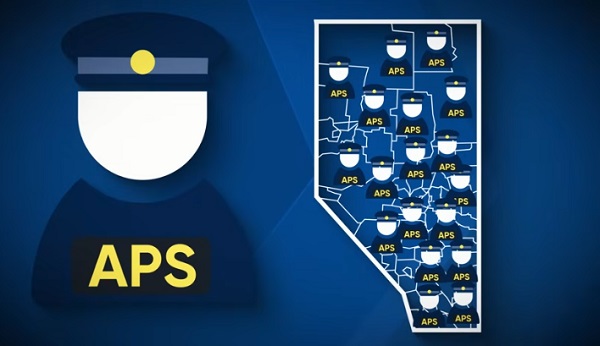
 Alberta2 days ago
Alberta2 days agoAlberta Next Takes A Look At Alberta Provincial Police Force
-
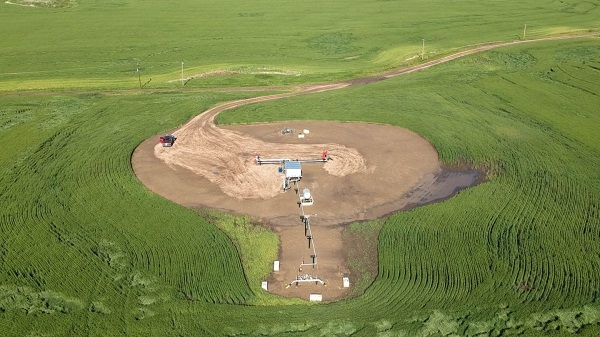
 Alberta24 hours ago
Alberta24 hours agoThe permanent CO2 storage site at the end of the Alberta Carbon Trunk Line is just getting started
-

 MAiD23 hours ago
MAiD23 hours agoCanada’s euthanasia regime is not health care, but a death machine for the unwanted
-

 Alberta2 days ago
Alberta2 days agoCanadian Oil Sands Production Expected to Reach All-time Highs this Year Despite Lower Oil Prices
-
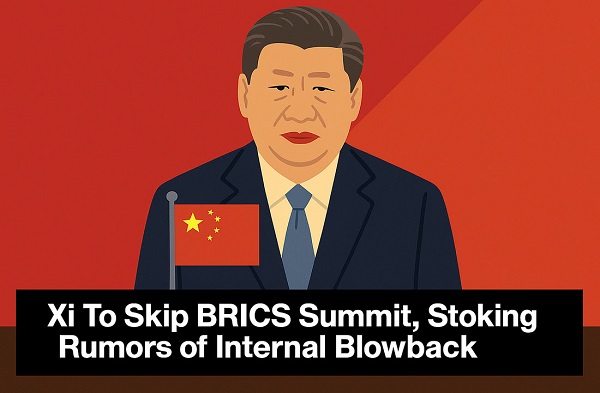
 International2 days ago
International2 days agoPresident Xi Skips Key Summit, Adding Fuel to Ebbing Power Theories









